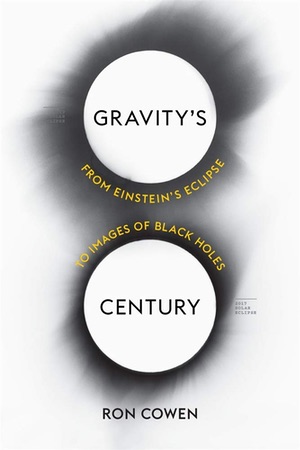Review: Gravity’s Centuryby Jeff Foust
|
| “Men of Science More or Less Agog Over Results of Eclipse Observations” read part of the headline of a New York Times account of the discovery. |
Much of this concise book (only about 160 pages when excluding the index and endnotes) is about what led up to that 1919 confirmation of general relativity. Cowen follows Einstein’s development of the theory and precursor work by others, as well as British astronomer Arthur Eddington, who organized the 1919 eclipse expeditions to provide observational proof of general relativity. Eddington was not the first to attempt to use an eclipse as a test of Einstein’s theory, just the first successful one: previous efforts were stymied by weather or, in one case, the outbreak of World War I.
Later chapters in the book examine the implications of general relativity, which drove much of astrophysics in the century that followed. That includes the expansion of the universe, black holes, gravitational waves and the concept of quantum gravity, where general relativity combines with quantum mechanics. The final chapter offers a look at the Event Horizon Telescope, the network of radio telescopes established by astronomers to take the first images of a black hole. (The book went to print before the April announcement by the Event Horizon Telescope that they had succeeded in that effort, producing an image of the supermassive black hole in the heart of galaxy M87.)
Throughout the past century, scientists have continued to perform tests—in the lab, on spacecraft, and using distant stars and galaxies—to confirm general relativity. Those tests have all confirmed Einstein, in one case to a precision of between one part in 10 million and one part in a trillion. “With relativity passing every test with flying colors so far, wny continue?” Cowen asks at the end of one chapter of Gravity’s Century. “Because sooner or later, the theory has to fail—and where it does, new physics may emerge.”
Note: we are temporarily moderating all comments subcommitted to deal with a surge in spam.
